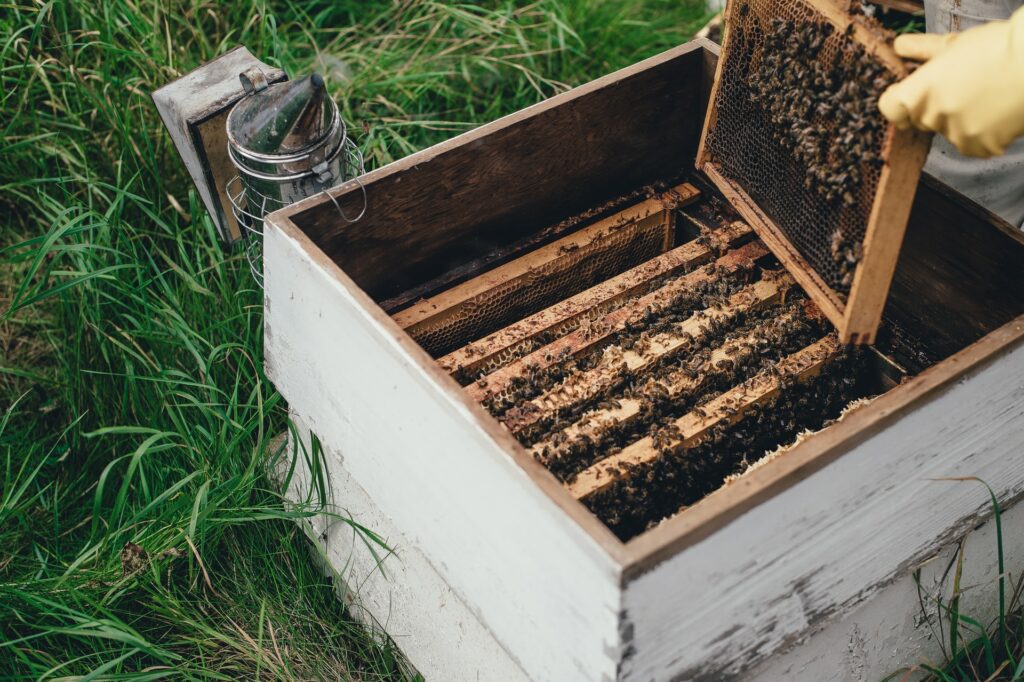Bees are somehow responsible for much of the food that we eat every day. As pollinators, they play a crucial role for the entire ecosystem and the preservation of environmental biodiversity; yet the health of these little insects is being affected by many factors; especially climate change and the use of pesticides.
Technology can tremendously help in implementing sustainable initiatives and protecting bees’ lives.
Carrefour Italy is in line with many CSR activities which also involve its technology, innovation expertise and know-how. That is why Carrefour Italy decided to partner up with the Italian startup 3Bee. Indeed, Carrefour adopted twenty hi-tech beehives and supports various 3Bee’s projects, such as the awareness campaign “3Bee on the road”.
3Bee developed Hive-Tech, a device which gives information about the beehive’s health. Its aim is to monitor the colony and optimize beekeeping practices.
Last August, 3Bee toured throughout Italy to check on bees’ health. They also wanted to highlight beekeepers’ difficulties and the improvements already observed thanks to this innovative project. As a partner, Carrefour Italy was present at one of the stops of the tour, in Como, Northern Italy.

What is Hive-Tech?
HIVE-TECH device is composed of a set of IoT sensors. They are placed both inside the beehive (called “ElectronicBee” or “E-Bee”) and outside of it (called “Lybra”). Lybra is positioned below the beehive to measure weight variation and registers beehive location thanks to an embedded GPS antenna.
On the other hand, E-Bee is plugged in the internal part of the wood case-hosting bees. It detects internal humidity, temperature and sound spectrum. HIVE-TECH users can consult, also through their smartphones, the 3Bee platform, which the whole set of parameters is transmitted to.
Moreover, the device provides easy-to-understand suggestions on how to intervene to optimize beekeeping practices. This is an innovative data-driven Decision Support System based on proprietary AI algorithms for optimized beekeeping management.
How does Hive-Tech work?
Lybra is composed of two anodized aluminum profiles. It ensures protection from external agents to the mechanical and electronic components placed inside. The two profiles differ in terms of the components. The first one – called Queen – contains the core electronic components of HIVE-TECH enabling data storage and transmission to the cloud. While the second one – Emi – allows increasing the precision of weight detection due to a more stable positioning of the beehive.
In each profile, two load cells are placed with capacity of 75 kg and precision of 50 g. It guarantees a reliable weighing of the beehives. Inside the Queen profile, there are two custom PCBs (Printed Circuit Boards): “Queen” and “scale” that regulate the operating principle of the system. The two electronic boards, together with a Li-ion Battery 18650, a cable with male connector and an SMA cable linking the Queen to an Antenna are placed inside a tailored polycarbonate (PC) box that guarantees additional protection and stability to the components.
The SMA Cable is connected on the other side to a GSM (Global System for Mobile Communication) antenna that allows data transfer through telecommunication networks. The antenna is visible outside the Queen Aluminum profile. Close to the extremity of the antenna, the system is provided with a button allowing users to interact with the system (reset the device, check battery state of charge and send a signal to the assistance) and a female connector that enables battery charging. The battery can be charged using a 1-Watt waterproof solar panel or a power bank with USB cable. The solar panel allows HIVE-TECH users to avoid manually charging the device. It is fixed on the Beehive surface through a circular magnet. Moreover, by using solar energy, it is possible to self-produce the energy needed by the device with a clean electricity source.
On the other hand, inside the Emi profile, only the PCB scale is placed together with the two load cells. The PCB is put inside a custom polycarbonate box. The data detected by sensors of the second profile is sent to the main profile thanks to a waterproof 1,1 m cable.
To increase the stability below the beehives, the aluminum profiles are equipped on their surface with 5 rubber seals in EPDM (Ethylene-Propylene Diene Monomer).
The Electronic Bee is positioned inside the beehives and is in charge of collecting information about the internal status of the hive. 3Bee designed E-Bee in order to avoid any disturbance to bee’s activities. The EBee consists of a custom square-shaped PCB that is placed inside a small case in ABS (Acrylonitrile butadiene styrene) that protects the sensors. The main sensors present on the PCB are:
1/ The humidity and temperature sensor
The digital Humidity sensor assesses the ventilation process of the bees (2% of resolution). The 3Bee team selected this part since it has a high accuracy (± 2%) and an excellent stability at high values of humidity and works with very low power. Moreover, the component allows to measure temperature inside the beehive without disturbing bees. Temperature measures has an accuracy of ± 0.2 °C.
2/ MEMS (Micro Electro-Mechanical Systems) microphones
The sensor records up to 1 hour/day of bee sound spectrum in order to assess the strength of the colony. The selected sensor has an accuracy of 38 dB, dimension of 3.76x3x1.1 mm, requires 160 uA as operating current and voltage between 1.5 V and 3.6 V. Thus, it has been evaluated as a good solution to ensure high performance, low power and limited dimensions.
The E-Bee is connected to the Queen Aluminum profiles through a waterproof 1 m cable. This way, the information transmitted by the sensors to the Queen profile are then sent to the Cloud platform.
The positive outcomes of Hive-Tech
The use of the HIVE-TECH was proven to reduce the mortality of bees by 20%. It also increases the yield of production of honey by 30%. In fact, it helps reducing the risk of adverse events:
- Prevent swarming, CCD (colony collapse disorder) and decline of colonies by continuously monitoring the status of the queen and the activity of the colony.
- Optimize and reduce the veterinary treatments to the effective needs, by early detection of bee illnesses through timely response to abnormal hive biometric parameters.
- Optimize the nomadism (positioning of hives) depending on real time information of the flowering status of the areas, to improve nutrition and productivity.
- Improve colony feeding comparing different products and determine the one that has ensured the highest yield. In this way, it is possible to reduce R&D costs for new product development and commercialize products able to guarantee the colony nourishment availability during winter.
In addition, HIVE-TECH will contribute to create Big Data of georeferenced knowledge, that is required to design predictive algorithms linking the health of bees to climatic conditions, agricultural practices (e.g. use of specific pesticides), diffusion of pathogens and efficacy of treatments.
This will contribute to the assessment of the causes of CCD, the effects of the use of pesticides and the effectiveness of alternative treatments (e.g. biological antibiotic treatments).
If you are interested by sustainability in retail, you can check our other articles here!




